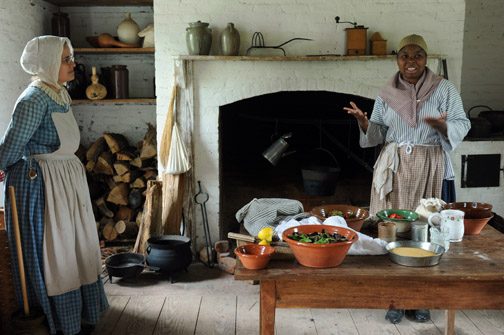York County: An Introduction

Introduction: The word “progressive” is often used in describing York County, and considering the county’s track record in both economic growth and land use planning, it’s hard to argue with that reputation. The second fastest growing county in the region since 2000 (behind Union), York is likely to pass Gaston County as the region’s second largest in population when the 2010 census data are released. In pursuing that growth, however, the county has also embraced a variety of growth management strategies to preserve its quality of life, ranging from a local sales tax to support transportation improvements, to official county-supported programs to protect York’s natural and cultural heritage. The question for York today is how to sustain its momentum as other counties around Mecklenburg awaken to their own potential, sometimes taking advantage of differences in policy between North and South Carolina to try and gain a competitive advantage.
Historical overview: Excerpted, with permission, from the website of the South Carolina State Library. The same information can be found at http://www.statelibrary.sc.gov/york-county.
“York County and its county seat, the city of York, were named for York County, Pennsylvania. The county was first established in 1785 as part of Camden District. From 1791 to 1800 it was part of Pinckney District, and it became a separate district when Pinckney was dissolved in 1800. Part of the county went to form Cherokee County in 1897. When European settlers arrived, this part of the state was inhabited by the Catawba Indians. The Catawbas signed a treaty with the English in 1763, relinquishing their rights to much of their land. This treaty opened up the area to Scotch-Irish settlers moving down from Pennsylvania and up from the lowcountry. In later years the Catawba reservation was greatly reduced in size, but recent legal settlements have now restored many of the tribe’s rights. The Catawba Nation is now the only federally-recognized Indian tribe in the state. Two battles were fought in this area during the Revolutionary War, Williamson’s Plantation (July 12, 1780) and Kings Mountain (October 7, 1780); the latter battle was a major victory for the Americans. Small-scale cotton farming was prevalent in the county in the nineteenth century, but textile mills became important in the twentieth century, contributing to the growth of the county’s largest city, Rock Hill. Some well-known natives of York County are Revolutionary leader Colonel William Bratton (1742-1815) and writer Dori Sanders.”
York today: A mayor of Rock Hill once quipped that his community wanted to be “close enough to Charlotte to feel the warmth, but not so close as to get burned.” In many ways, this attitude reflects the general approach York County has taken in its relationship with its neighbor to the north.
What began as spillover residential growth from Mecklenburg, first around Lake Wylie, and then down Interstate 77 into the old textile towns of Fort Mill and Rock Hill, gradually expanded to include the relocation of companies that wanted to be close to Charlotte without the higher taxes and congestion of Mecklenburg. This was supported by local leadership, which started using public and private funds to buy land and build “spec” buildings for industry long before other counties in the region were doing the same. York County grew by nearly 38% in the decade after 2000, and residential developments such as Tega Cay on Lake Wylie and Baxter near Fort Mill came to symbolize the Charlotte region’s growing prosperity. By the end of the decade, few could argue with the general premise that York was indeed enjoying the warmth of being close to Charlotte.
To prepare for this growth (and “to keep from getting burned”), York County also became a regional leader in adopting growth management strategies that weren’t embraced by other counties until much later. In the early 1990s, York was the first county in South Carolina to develop a comprehensive land use plan, even before the State of South Carolina made comprehensive land use planning mandatory in 1994. York’s leadership on this front, along with subsequent planning efforts of local municipalities, gave the county a well-deserved reputation for progressive land use planning.
Following these planning initiatives, a number of measures were enacted to help manage future growth. One of the earliest was a one-cent sales tax for transportation known as “Pennies for Progress.” This program was launched in 1997 (renewed in 2003), and over the years has supported a number of local road projects, such as the multi-lane widening of SC Highway 5 in western York and the new US Highway 21 bridge over the Catawba River. The program is up for renewal again in 2011, and its fate will say a lot about the willingness of York’s citizens to continue supporting infrastructure improvements, even in the midst of an economic recession.

Another significant initiative was launched in 1998 to identify and protect some of the county’s most important remaining open space, called York County Forever. While some might argue that funding levels haven’t been sufficient to meet the open space needs of such a rapidly-growing county, the formal establishment of such a program within the organizational structure of county government nonetheless sent a message that York was willing to go further on the issue of open space preservation than most counties, where advocacy for land protection is often left to non-profit organizations. The same can be said for the preservation of the county’s cultural resources, where the York County Culture & Heritage Commission was established not only to oversee the management of an array of county-owned museums and cultural facilities, but also to promote awareness about York’s rich cultural heritage.
Successes by some of York’s municipalities have also added to the county’s growing reputation for smart growth. These include the development of the Anne Springs Close Greenway in Fort Mill and its adjoining Baxter Village (one of the region’s premier examples of “new urbanism”), and ongoing revitalization efforts in Rock Hill, such as the redevelopment of Main Street and the old “textile corridor” between downtown and Winthrop University (itself one of the county’s key assets, having emerged as one of the region’s major centers for higher education). Rock Hill has also embarked upon an ambitious, long-term effort to “retrofit” the Cherry Road corridor, a typical low-density commercial strip from the mid 20th century, into an inviting gateway for its downtown, something few other communities in the region have attempted to do. And the county seat of York, a quintessential southern courthouse town, has emerged as a regional model in historic preservation.

Despite York’s success, however, a number of challenges loom, some typical of those facing other fast-growing counties in the region, while others are more specific to York given its location across the state line. Will differences in regulatory and tax policy between the two states, such as North Carolina’s more liberal annexation laws and South Carolina’s greater reliance on the sales tax to fund education, serve as competitive advantages or disadvantages for York in managing growth? Will York be left on the sidelines as passenger rail service gains momentum in the Charlotte region, particularly if the State of South Carolina doesn’t embrace it in the same way that North Carolina has? Will ongoing interstate battles over the use of the Catawba River’s water and differences in state tax incentives to lure business harm the collegial relationship that York has built with its northern neighbors, and so successfully used to its advantage?
Whatever the answers to these questions, one thing seems certain – York will approach such future challenges with a strong sense of civic pride. Symbolic of this pride is a gateway erected by the City of Rock Hill near its downtown using the columns from Charlotte’s old Masonic Temple. These columns were incorporated into a series of “Civitas Statues” that are meant to be representative of the community’s past and future. “Civitas” is Latin for “civic pride”, and it would be hard to find two more fitting words to describe not only Rock Hill’s approach to the future, but that of York County as well.
— Jeff Michael
York County links
York County Articles & Publications







